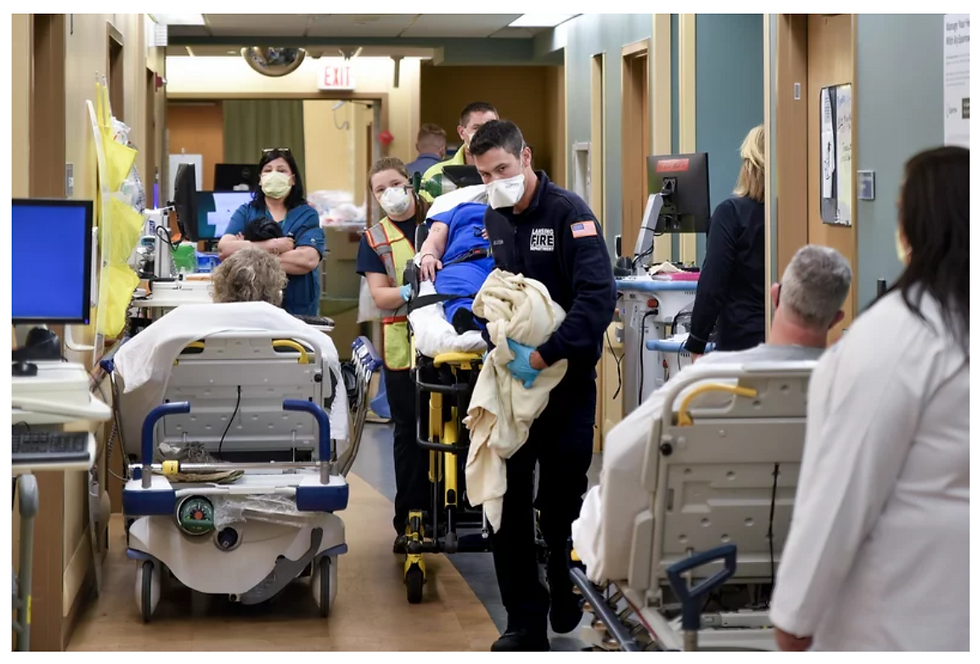Building a Wound Program of Excellence Under PDGM
- Joe Ebberwein

- Apr 3, 2019
- 4 min read
Updated: Jan 31, 2021
PDGM (Patient Driven Groupings Model), will go into effect at the start of 2020. It is the most significant change in Medicare reimbursement for home health agencies since the change from per visit, cost-based reimbursement to the Prospective Payment System (PPS) in 2000 (with the Interim Payment System in place for a brief period during the transition). It is estimated that one-third of the home health industry either shut their doors or were absorbed through acquisitions and consolidations when PPS was implemented. Some industry thought leaders have predicted that we may see a similar outcome with the implementation of PDGM.
So, how will your agency fare under the PDGM reimbursement model?
Is your home health agency prepared to answer this question and more, including:
Do you know your baseline data and the impact on your reimbursement when- the Physical Therapy thresholds are no longer in place with PDGM, when payments are divided into two 30-day payment cycles?
Do you know the composition of your patients - which of the 432 new payment groups will they fall under?
How will you adjust your marketing efforts to ensure the optimal mix of patients to support your current staffing models while producing a sustainable bottom line?
The good news about wound care and PDGM
What we do know is that wound patients have one of the highest potential reimbursement opportunities of the new 12 clinical grouping categories. Even though the non-routine supply (NRS) add-on has been eliminated, the reimbursement points will allow agencies the opportunity to care for wound patients who have always been one of the most challenging and costly to effectively manage. Historically, some agencies routinely do not accept wound patient referrals. Home health agencies have an opportunity now with PDGM to develop a Wound Program of Excellence so that they feel confident not only in accepting wound patient referrals but actively marketing for wound patients and partnering with community and institutional referral sources. These referral sources are seeking partners who have the best clinical and financial outcomes to ensure that patients’ wounds heal in a timely manner without unnecessary hospital readmissions or visits to the ER. As traditional Medicare continues to shift to Medicare Advantage, these payers will be identifying and partnering with agencies who deliver the best clinical outcomes at the lowest overall cost of care.
What are the key elements of a Wound Program of Excellence?
In our experience, the key components of a highly successful wound program which produces excellent clinical and financial outcomes, include the following: Successful Wound Program Elements
Comprehensive wound/skin integrity policies and procedures
Evidence-based wound treatments
Standardized wound formulary by wound type
Access to board-certified wound specialists
Ongoing evaluation of staff competencies for wound care
Wound metrics and outcomes dashboard for monitoring
One of the key components of building a Wound Program of Excellence is having access to a certified wound expert (CWOCN/CWS) to help manage complex wound patients. However, these clinicians are scarce and expensive. Does this scenario sound familiar? For example, ABC Home Health and Hospice hires a certified wound care clinician to address the increase in the census of patients with wounds. The new CWOCN covers a large geography for the agency’s five branches, so the maximum visits the CWOCN can make is two or three in one day. Often times, the CWOCN accompanies the home care nurse on the visit for education purposes which effectively renders her time with the patient as a non-billable visit. This results in the agency utilizing an expensive resource in a very unproductive and inefficient manner. When the census of wound patients dips, the CWOCN is asked to help with admission or routine visits on non-wound patients which leads to frustration on the part of the CWOCN. Another scenario common in home health agencies is the referral of wound patients with orders for daily dressing changes sometimes using the antiquated “wet to dry” dressings. This is not financially feasible for a home health agency and in most cases does not reflect evidence-based wound care. There are affordable advanced wound dressings which are indicated for longer wear times and designed for heavy exudate, which reduces the necessity for frequent dressing changes (while improving healing outcomes) and the overall wound visits per episode. While wound care can present many challenges for home health agencies, there are many emerging technologies that can help, including mobile wound assessment on a smartphone or tablet. The new Home Health Quality Improvement (HHQI) package provides an excellent, comprehensive overview of wound management for home health agencies. The Photography and Telemedicine, penned by Corstrata’s wound care specialists, Jan Cuzzell, MSN, RN, CWS, VP Clinical Quality and Myra Varnado, BS, RN, CWON, CFCN, provides important insights into the best practices, benefits, and uses of telehealth and digital photography for wound documentation and communication among healthcare teams. Telemedicine and digital technology are playing a vital role in helping health care professionals evaluate, diagnose, and treat patients in remote locations, increasing critical access to wound care specialists that previously wasn't available. How can Corstrata help your home health agency build a Wound Program of Excellence?
Corstrata creates access to its board-certified wound care specialists using mobile technologies to improve clinical and financial outcomes for our customers, and assists providers in the proper assessment of wounds during the completion of the OASIS assessment. Additionally, we collaborate with providers to develop a wound program that includes evidence-based, best practice wound treatments, staff education, pressure ulcer prevention, and optimal wound formulary by wound type. Corstrata provides wound image and video consults to facilitate accurate identification of the wound type and associated staging, precise wound measurement, and recommended treatment and wound dressing to improve wound outcomes.
Contact us today to help your agency build a Wound Program of Excellence.




Comments